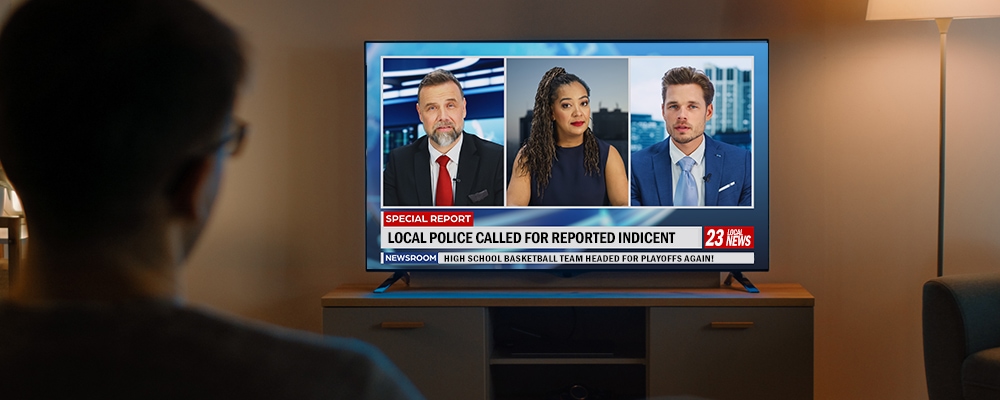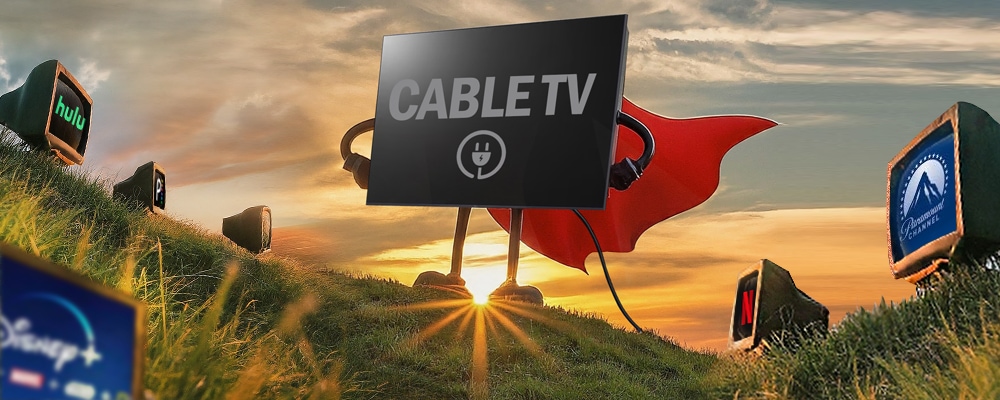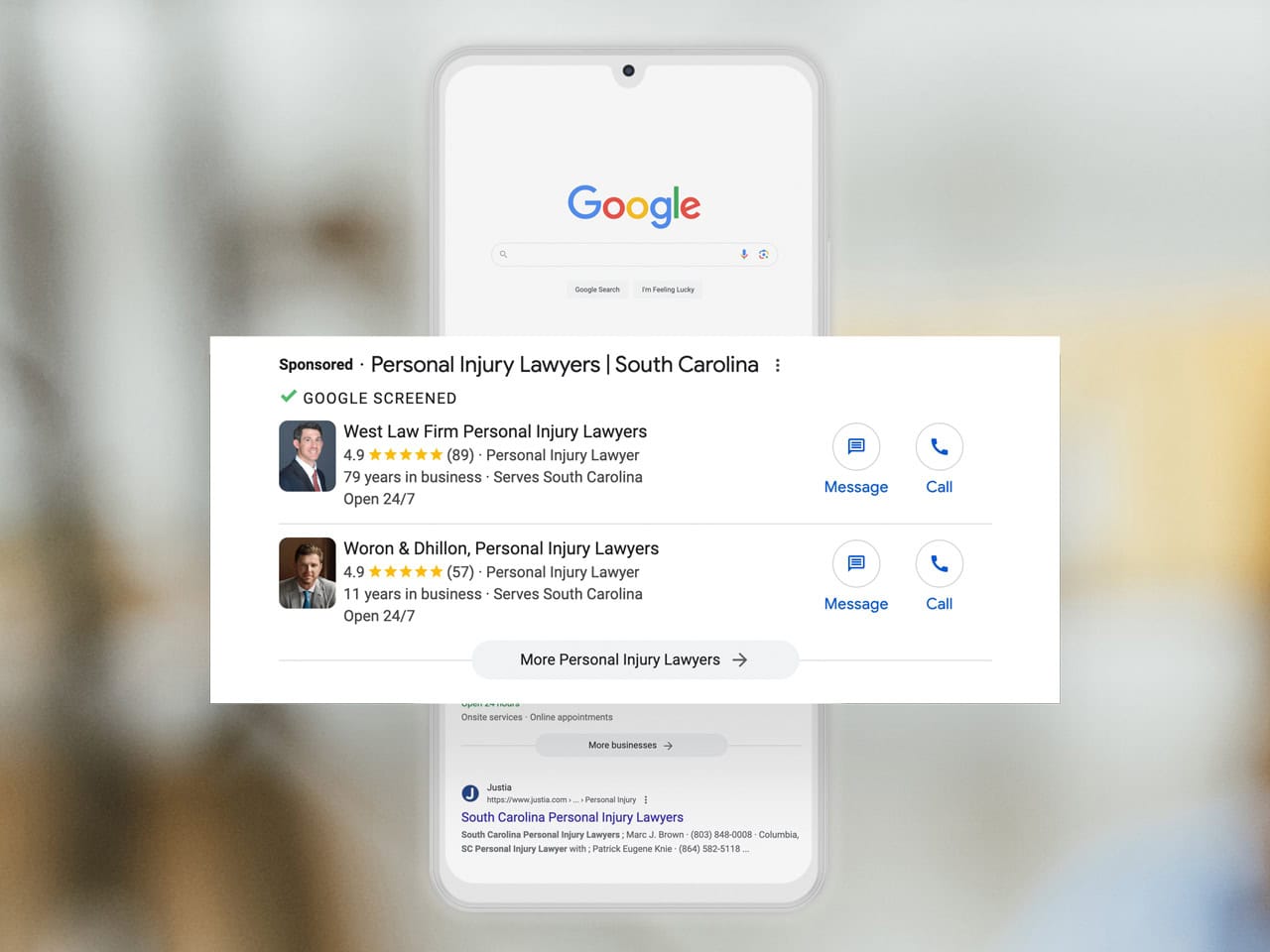Down But Not Out
The entertainment landscape has undergone a significant transformation in recent years, with the rise of streaming services revolutionizing how we consume content. Platforms like Netflix, Amazon Prime Video, Hulu, and Disney+ have gained immense popularity and even started producing original content. However, despite streaming services' rapid growth and success, TV and cable remain dominant over their relatively newer counterpart.
While streaming continues to grow in popularity, broadcast and cable still represent a significant percentage of “time spent with TV” in the United States. Nielsen reports that Americans spend 50% of their time with broadcast and cable, with 30% using cable and 20% broadcast. While viewership is expected to decline in the next few years, certain factors will keep these channels relevant. These include:
1. Local and National News
Television and cable have a significant advantage in delivering real-time news and information. Local news on broadcast networks such as CBS, NBC, ABC, and FOX have a large viewership base, and their ability to provide immediate updates on breaking news stories is unmatched by streaming platforms. Cable news networks such as CNN, Fox News, and MSNBC have well-established studios, extensive resources, and a team of seasoned journalists who can deliver up-to-the-minute coverage.
However, unlike cable news, broadcast and local news affiliates have a close connection to communities and possess the resources to keep producing local content for viewers for years to come. According to a new TBV analysis, local broadcast TV news delivers an 8-12 times larger audience than Netflix, Amazon Prime Video, Hulu, Apple TV+, Disney+, and Max combined.
While streaming services may offer some news content, they will require more resources and infrastructure to compete with traditional news networks regarding immediacy and depth of coverage. People who rely on television for their daily news consumption may find it more convenient to continue using broadcast cable or satellite TV.

2. Live Sports and Events
Live sports and events also represent a significant portion of television viewership and are an area where TV and cable maintain their dominance. While some streaming services have started offering live sports coverage, they often have limitations, such as regional blackouts or exclusive deals with specific providers. Traditional cable and satellite providers have long-standing agreements with sports leagues, ensuring they can offer comprehensive and reliable coverage of major sporting events.
3. Content Catalogues
While Netflix and Hulu original shows have gained significant traction in the past decade, they lack the resources to produce premium hit programming consistently. Traditional broadcast and cable networks that produce hit shows like The Simpsons, Friends, The Office, and The Big Bang Theory have very large, established studios, writers, and the capital to continue to produce premium hit programming.
While streaming services like Netflix, Amazon Prime Video, and Hulu have seen success with their original content, they will be limited in their resources until their subscriber and ad-supported revenue hits a point where they can fuel that kind of production.
However, there are some exceptions. Platforms like Paramount+ and Peacock, for example, are extensions of the broadcast universe, which is essentially just a different pipeline for the same broadcast content. Here’s how viewership may migrate from broadcast and cable networks to streaming.
Major Broadcast and Cable Networks to Migrate Viewership
While broadcast and cable are less dominant (in their current configuration) than a decade ago, they both still deliver prevalent, popular programming and the most significant reach opportunity within the mix.
However, things are also changing. The major networks (broadcast and cable) have no plans to let their massive viewer base decline. As the owners of current hit programming and decades of powerhouse content behind them, they will migrate their viewers over to their streaming platforms (i.e., Peacock (NBC), Paramount + (CBS), and AMC).







Why Shouldn’t I Just Shift My Dollars to Streaming?
While streaming may have yet to serve as a replacement for traditional broadcast and cable outlets, its impact is undeniable. As of May, recent data reported by Nielsen sheds light on the considerable influence that streaming has on the media landscape.
According to Nielsen's findings, streaming video now accounts for a substantial 38.7% of the total time spent with video content. This figure alone speaks volumes about the shifting preferences of viewers, who increasingly turn to streaming platforms for their entertainment needs. This surge in streaming consumption reflects the convenience and diversity of content these services offer, allowing viewers to access a vast library of movies, TV shows, and original programming on demand.
YouTube Streaming Overlooked
A few major players have emerged as dominant forces within the streaming arena. Netflix, Amazon Prime Video, and Hulu collectively command a significant share of the streaming market, accounting for 40% of all streaming usage. Their extensive content libraries, robust original programming, and user-friendly interfaces have solidified their positions as go-to platforms for millions of subscribers.

However, it's essential to note that these statistics do not include YouTube usage, representing an additional 9.2% of all time spent with video content. Often overlooked in streaming discussions, YouTube plays a unique and crucial role in the media landscape. It serves as a platform for user-generated content, including vlogs, tutorials, music videos, and more, making it a hub for diverse forms of entertainment and information.
YouTube's significance must be considered, particularly for advertisers looking to establish a presence in the digital space. With its massive user base and global reach, YouTube offers advertisers an unparalleled platform to connect with audiences through targeted ads, influencer collaborations, and branded content. It has become vital to many advertising strategies, enabling brands to engage with consumers dynamically and interactively.
Pros and Cons of Streaming
Some significant pros are associated with streaming, such as the ability to target geographically and demographically, giving you a level of control that cannot be matched by broadcast and cable.
In addition, following the user versus hoping they are there to see your spot during any given daypart placement significantly reduces potential waste in your media buy. Finally, it reaches younger audiences (Gen X and below) who have adopted streaming as their primary means of viewing video content. This will flatten out, however. As the medium matures, older audiences will embrace it.
However, it’s important to note that with these pros come also significant cons.
For example, the ability to target so tightly results in a higher cost per thousand than broadcast (outside of prime placement). There are also many streaming choices available to viewers. This means that achieving meaningful reach requires advertising on multiple platforms to combat fragmentation.
Beyond fragmentation, another huge hurdle to reach is access to advertisers. Some of the largest and most high-profile streaming platforms target big-budget, national advertisers, so hitting high audience saturation can be difficult. Some platforms (i.e., Netflix, Disney +, Amazon Prime, and YouTube TV) don't take local advertisers. Some offer limited access based on subscription levels (ad-supported tier versus premium subscription/no ads. (i.e., Hulu, Peacock, Paramount +).
Lastly, the churn rate. Subscription-based platforms continue to struggle with customer retention. This is because consumers have a lot of choices. Two factors drive those choices: price and content. Subscription costs add up quickly. At the same time, building on the ongoing library of desirable content has proven challenging. As a result, the turnover rate for streaming services is increasing. This makes the audience a moving target, which makes it harder to sustain reach unless you have a lot of depth to your streaming mix.
Mind the Mix. Buy Smarter.
It's easy to overlook the enduring significance of traditional broadcast and cable channels in your marketing strategy, especially in the age of streaming. While streaming platforms have certainly carved out a prominent place, it's crucial to recognize that a comprehensive approach to media placement is essential for success. Despite the rise of streaming, broadcast and cable are still critical to your marketing efforts.

Moreover, you must remember that no matter how extensive the reach of any one media outlet, no platform can be effective on its own. Media consumption varies throughout the day and takes place across multiple platforms. If you don't have a good mix of media (and that means broadcast, cable, CTV, etc.), you'll always fall short of mass reach and frequency. So, it's never been more important to "buy smarter." If you're going to invest in media, be sure you truly understand your audience's media consumption and follow those habits for your best chance at success.
Convert Viewers to Clients with Strategic Marketing Solutions
At Legal Communications Group, we know every ad dollar counts. With decades of media planning knowledge and experience, we will leverage our expertise to create a custom media mix that optimizes reach against your audience. Is your business falling short of its advertising goals? Give us a call today to learn more.









